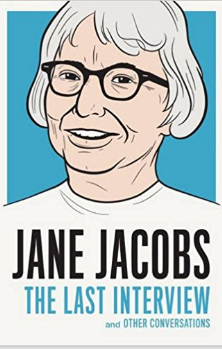Badass Middle Age Women, Part Two: Jane Jacobs
Why isn’t Jane Jacobs a household name? How many people think of Robert Moses as a towering figure in our city’s history, but have no clue that Jane Jacobs was our savior? I had no idea either, until I saw the documentary Citizen, which is not a very good film, but managed in spite of itself to tell the story we should all already know.
Washington Square Park would have been a sprawling expressway and most of Manhattan would be a thruway from Westchester to Long Island if it hadn’t been for Jane Jacobs.
And if she had been a big fat man who smoked cigars and intimidated other not so big, just as fat men, we might have had far fewer large, desolate housing projects and many more mixed income communities throughout the city.
She was never accorded the true avenger status she deserved—in fact, the press treated her like a novelty: a cute little middle-aged housewife making noise and wielding protest signs. But she taught herself to be a first-class organizer and masterfully manipulated the media to shed light on Moses’ systematic destruction of New York.
Jane Jacobs wrote The Life and Death of American Cities at the same time that Rachel Carson published The Silent Spring and Betty Friedan unleashed The Feminine Mystique.
We have been doing this work— this shifting of entrenched paradigms, dismantling of male power structures, organizing of badass women to save our cities, our planet, and ourselves—for centuries. Sometimes it seems like there is no progress at all; sometimes it seems like two steps forward, one step back. So when I think about what Jane, Rachel and Betty accomplished through their words and actions, and what our world might look like without them, I get re-inspired. I’m taking my middle aged, grey-haired, tire- around-the-tummy self and jumping into the fray. I’m all in. Thanks, Jane.



